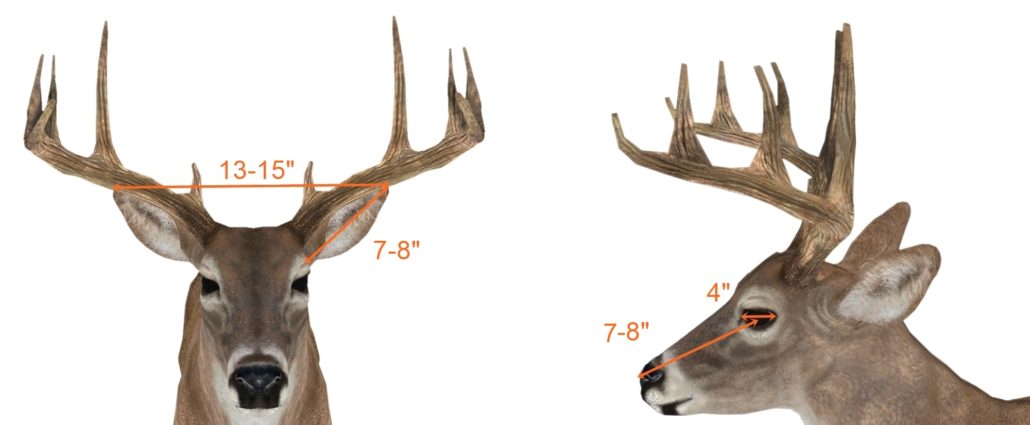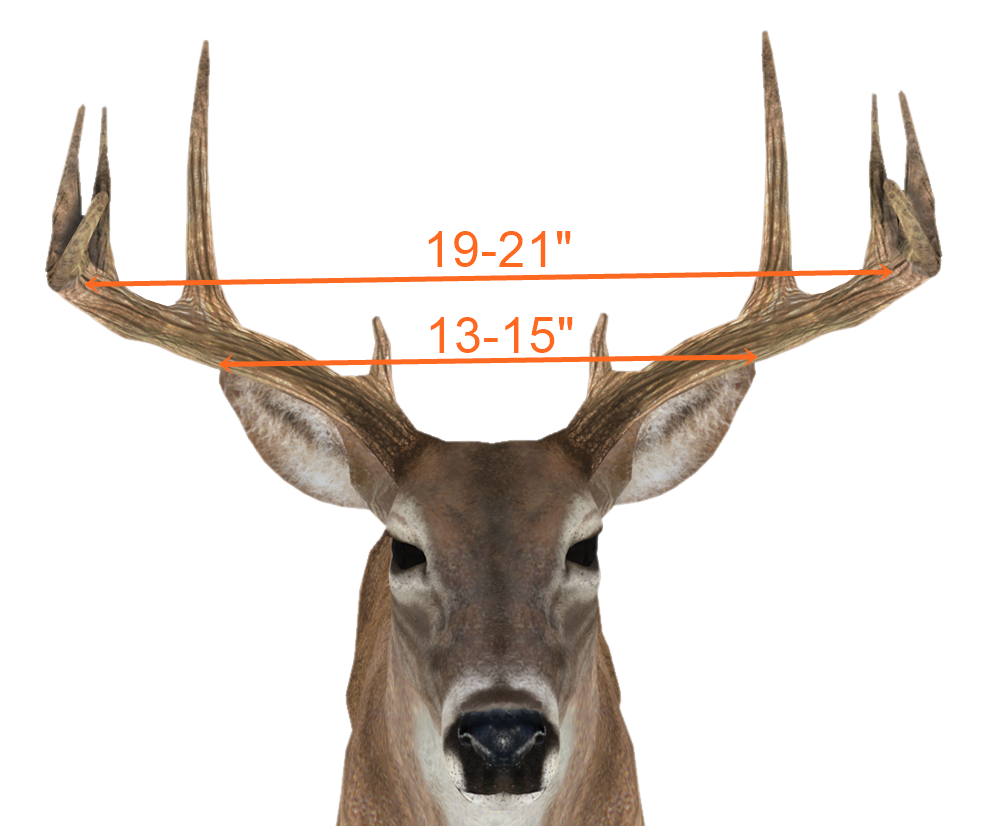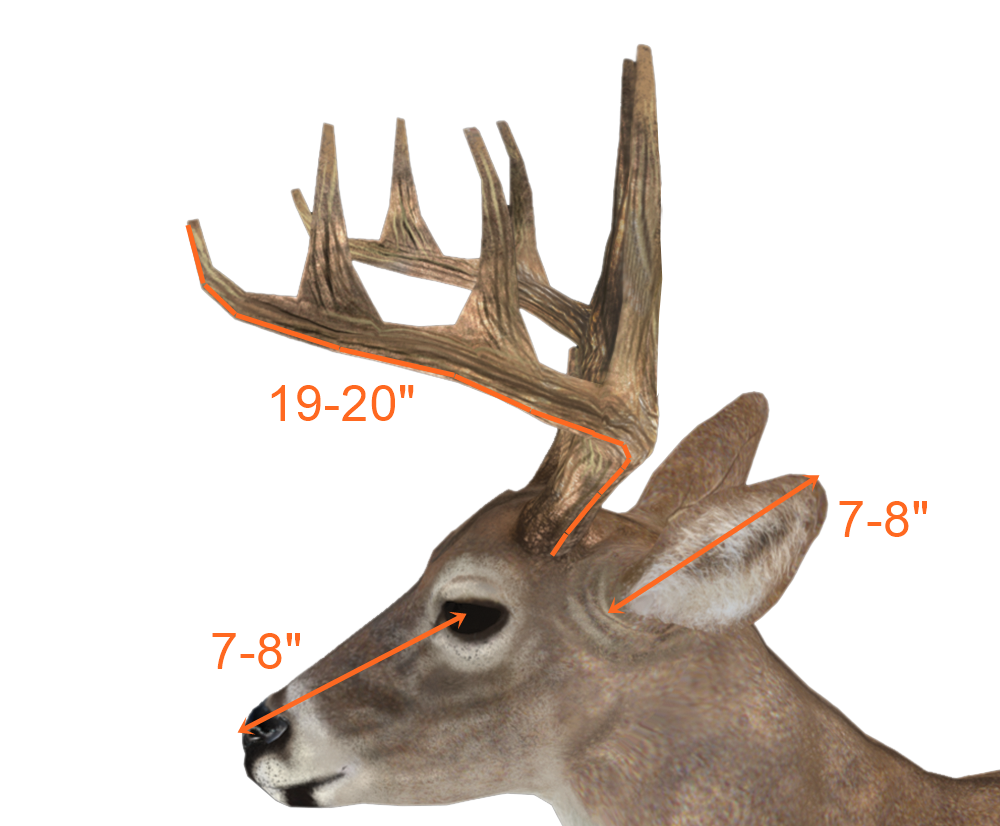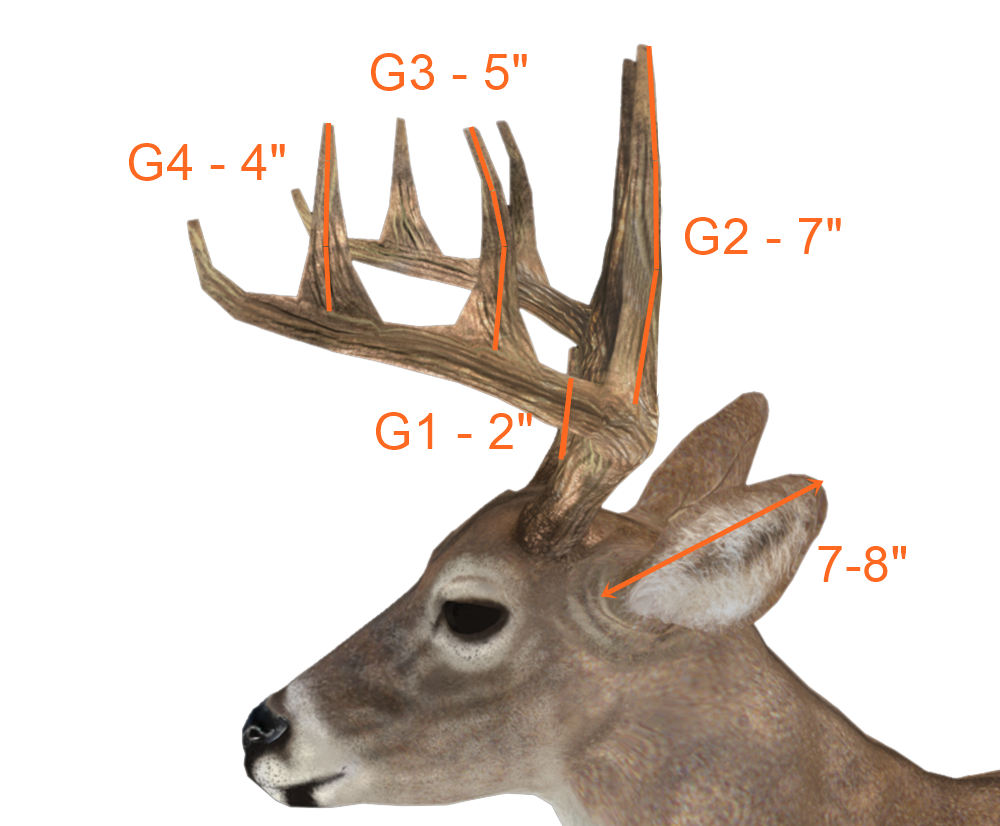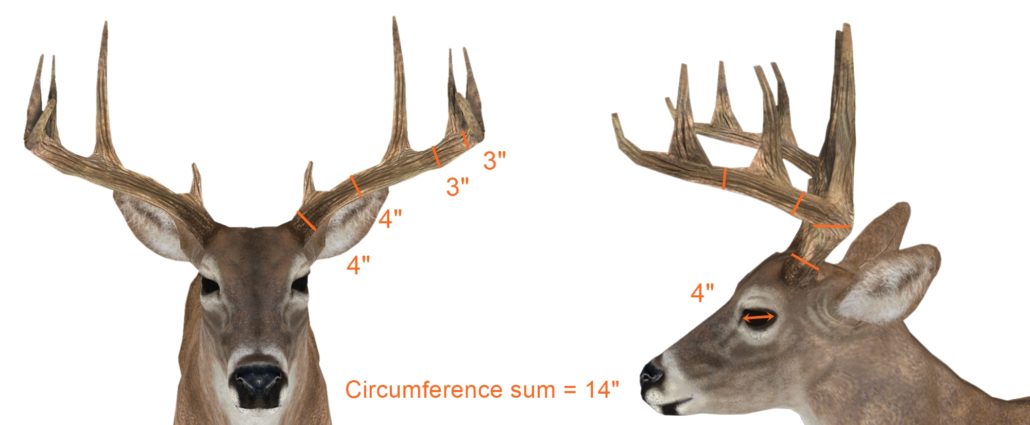Field Scoring a Deer 101
Scoring a Deer | How to Field Score a Whitetail Buck
While some whitetails are clearly “shooters”, as a hunter, you might often find yourself encountering a buck that is on the border of “shoot” or “don’t shoot”. Today’s advancements in trail cameras have tremendously cut back on the guesswork and these questionable encounters. It is not often that you come across a buck of significant caliber without at least having a couple of pictures of him. The addition of recent advancements in deer scoring technology now make it possible to know the exact score of the deer based off of these trail camera photos. However, there is always the possibility of the unknown. The rut, for example, is when hunters are still forced to test their skill at field scoring a whitetail. While it is not used often, the ability to field score deer is still a very important tool to have. The article below will walk you through how to quickly and effectively field score a buck. After you read through the blog, test yourself with the BuckScore® Field Scoring Quiz. The participation in the quiz will also reward you with a 50% off a subscription to the BuckScore® app. The quiz is located at the bottom of this article.
Field Scoring a Whitetail Buck
Follow along with each tip in order to find out how to properly field score a whitetail! The first step in this process is establishing your reference points. When field scoring deer, your best reference point to get an idea of the frame size will be the buck’s ears, eyes, and nose. While regionally speaking these measurements and reference points can be off, a general idea or average between regions should be used. The average measurements of how many inches each reference feature is will help you get a very accurate estimate of the buck’s score. The reference points include:
Ear Tip to Ear Tip – Ear tip to ear tip is a very important reference point in determining the buck’s spread. A frontal view is needed to get the best estimate, but generally, a buck’s ear tip to ear tip measurement will be 13-15 inches.
Ear Base to Tip – The ear base to tip measurement is important when figuring not only the size of the tines but the length of the main beam. Generally, a buck’s ears from base to tip will be 7-8 inches.
Eye Circumference – The circumference of a buck’s eye is a good reference point in roughly calculating your four antler circumference measurements. For this reference point, a buck’s eye is around 4 inches in circumference.
Eye to Tip of Nose – The center of the buck’s eye, to the tip of his nose is a good reference measurement when estimating main beam length. This measurement is around 7-8 inches.
After you have referenced your initial measurements you will be ready to start field scoring the buck. Take a look at the picture above to memorize the reference points. You will need them in the steps below. The first step will be estimating the buck’s spread.
The Field Scoring Shortcut
Note that the example pictures and steps below are walking you through scoring first the inside spread, but also just one side of the buck’s antlers. If the buck is relatively symmetrical, you will simply be able to score one antler and multiply it by two. By taking this shortcut and adding the measurement of the spread credit, you will arrive at a rough estimate of the buck’s score.
(Score of antler 1 X 2(if antlers are symmetrical)) + (spread) = Score of buck
Estimating Spread
Estimating a buck’s spread credit is relatively one of the easiest scores to estimate while field scoring a buck. By using the Ear tip-to-tip reference measurement of 13-15 inches, you can quickly gather if a buck’s spread is an inch or two inside or wider than his ears. For bucks that have a spread that far exceeds his ears, simply reference the ear base to tip measurement of 7-8 inches. The picture below shows the example buck exceeding the tip to tip measurement, therefore by estimating how many inches wider the antler extends beyond we can roughly estimate the buck’s spread to be around 19 – 21 inches.
Main Beam length
Beam length is easiest to estimate from the side angle or 90 degrees. This allows you to reference the measurements of the ear (7-8”) and eye to nose tip (7-8”). Simply applying those measurements and subtracting or adding inches to how short or long the main beam is, can be the easiest way to estimate the beam lengths. In the case of this buck, the main beam is significantly longer than the ear and eye to nose tip measurements combined. Combined the reference points equal 14-16 inches, so this deer can easily be estimated to have a 19-20 inch main beam measurement.
Note: Be aware that significant “upturned” main beams or, for instance, when the main beam sweeps in and is close to touching tips with the other main beam, will potentially skew your estimates. In an ideal encounter with a buck, you would receive frontal and side views, allowing you to judge, in inches, how much the main beam may be skewed from the side view.
Tine Lengths
Tine lengths, while they may seem easy, are actually quite difficult to estimate. They are the furthest from the reference points but also can be subject skewed estimations based on view angles, or when additional points on the tine are present. Remember that for a point to count towards the whitetail’s score the tine must be at least one inch. The easiest point to reference tine length is the ear base to tip measurement. By estimating how much longer or shorter each tine length is (G1, G2, G3, G4, etc.) than the ear measurement of 7-8 inches, you can quickly gather a rough sum of the tine measurements. This buck’s tines can roughly be summed to roughly 18 inches.
Estimating Mass
Without the reference measurement of the circumference of the buck’s eye at 4 inches, judging the four antler circumference measurements would be difficult. All bucks, regardless of how many tines they have always will be measured with four circumference measurements. Four pointers, six pointers, or even spikes will all need four evenly distributed measurements of antler circumference. The circumference measurements are measured between:
- Halfway between the base and the G1
- Halfway between the G1 and the G2
- Halfway between the G2 and the G3
- Halfway between the G3 and the G4
To estimate the buck’s circumference measurements simply judge how much smaller or bigger the antler’s circumference is from your reference point of the buck’s eye. If the antler looks roughly ¾ of the eye circumference it is most likely in the 3-inch range. If it is roughly 1.5X the circumference you will ballpark the circumference measurements in the 5.5-6 inch range. The example buck can be judged at essentially the same mass for the first two measurements between the base and G1, and the G1 and G2. These measurements would be somewhere in the ballpark of 3.5-4 inches. The third and fourth circumference measurements are around ¾ the size of the eye so can be estimated to be around 3 inches. The sum of the example buck’s circumference measurements is 14 inches.
Adding the Measurements
After you estimate each of the antler measurements for one side of the buck’s antlers, you are ready to either score the other side or you can take a shortcut. If time allows (it often does not) and if the buck is generally symmetrical, you can simply multiply the sum of the antler measurement by two. For this buck, a very symmetrical buck, we can total the antler measurements to be roughly 51-52 inches. By multiplying 51-52 inches by two, taking the shortcut in estimating the score of the other antler, we can arrive that this buck’s antlers are around 102-104 inches.
We then add the 19-21 inch spread credit of the buck to come to a rough estimate that this buck’s score is 121- 124 inches. This put’s the buck into the 120-inch class, but more specifically the 120-125 range.
Is That Estimate Correct?
You do not get the luxury of confirming your estimations in the field while hunting. However, you can do two things to greatly improve your odds at estimating the buck’s score correctly. You can practice field scoring pictures or videos of known bucks, or you can get ahold of the BuckScore® program. The BuckScore® program allows you to score a buck’s antlers based on any picture. This picture can be a trail camera picture, a harvest picture, or even a freeze-frame of a video if you happen to film your hunts! We scored this buck using the BuckScore® program. The results are posted below. The example buck’s antlers grossed at 121.988 or simplified to 122 inches.
Are You Ready to Field Score a Buck?
Test your ability at field scoring whitetails by taking the BuckScore® field scoring quiz. You will watch a quick video encounter with a buck and be given 4 multiple choice options of scores. There are 10 bucks to score with a time limit of 10 minutes for the entire quiz. This allows you 1 minute to score each buck, about all the time you might receive in a real hunting scenario. Once you have completed the quiz, you will to receive the actual BuckScore® certified score of the bucks, your quiz results, and a 50% off code on your first month of your BuckScore® subscription!
Still Not Confident Field Scoring Deer? Go Mobile!
BuckScore® Mobile, now allows you to score deer with your phone! This now allows real encounter scoring. Within minutes of snapping the picture, you can have a score of the deer before he even offers you a shot opportunity!

